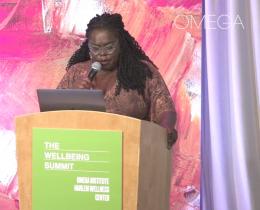Dominant culture would have us believe that a healthier, more just food system—and one that can still feed the world—is a pipe dream. In truth, the delusion is believing that our current system has any hope of success. To survive, we have to reinvent it.
Because the United States is the bastion of agricultural innovation, it’s likely to be among the last countries to alter course and create a more just system.
But there is reason for hope.
Though you may not see many examples of better food systems in your daily life, they do exist. Much distribution remains decentralized, and subsistence and small-scale farming thrive and even dominate in most of the world; many people grow food sustainably, with judgment, experience, and wisdom, along with an understanding that agriculture can’t be reduced to a formula.
This matters, as do significant changes and efforts to create better food in the West. There is positive change coming to our food system, change that’s widespread, change that’s rekindling and enhancing people—and earth-friendly traditions of food production.
“The Peasant Way”
The word “agroecology” was first used about a hundred years ago, and it remains the best descriptor for the movements that are rebuilding our relationship with food. The word and practices have been advanced by the global peasant organization La Via Campesina (“the Peasant Way”) for decades, and that—along with the fact that, moving forward, agroecology is the most sensible approach for agriculture—has led to its use and at least partial endorsement by the governments of France, Cuba, and others, and by the UN’s Food and Agriculture Organization, which included agroecology as a key component of its 2023 Sustainable Development Goals.
For those reasons—and because “producing food in harmony with the planet and its inhabitants” is a mouthful—”agroecology” is the word I’m sticking with. It’s a clunky term, but perhaps its unsexiness is an advantage: It’s not likely to be co-opted as quickly as “natural” and “organic” were; it’s hard to imagine “agroecological” power bars or potato chips, though stranger things have happened.
As you can guess, agroecology is a set of practices that integrates ecological principles into agriculture. As a scientific approach to farming that works with all of nature’s power and gifts, rather than seeing nature as something to be conquered, it stands in opposition to industrial agriculture. It is more serious and comprehensive than “organic,” and not constrained by USDA definitions.
But agroecology is more than just a series of techniques—it’s a philosophy and a broad commitment to improve society. Adherents define it as “an autonomous, pluralist, multicultural movement, political in its demand for social justice.” That’s key.




